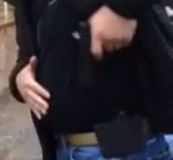I sort of agree. Skilled and fast are not at odds. So we agree. At a certain point, the best folks in the world at working against a timer seem to need to get on the trigger as the muzzle clears the holster. In several venues it is what is required to be competitive and to break certain time standards. If that is the venue you want to excel in, no problem. The choice comes when it comes to picking what you are most interested in. I didn't make this up, it is what is coming from the technical masters of a variety of shooting sports. Those of us from the purely defensive side of the fence have seen tons of failures related to this practice, so we try to train around that for our venue. Simple. When it gets complicated is when we are mixing two very different things. Much of that difference is due to what is going on right before the draw commences, and what is taking up he brains priorities when task stacking.




 . Snarky and easily butt hurt. Favorite animal is the Cape Buffalo....likely indicative of a personality disorder.
. Snarky and easily butt hurt. Favorite animal is the Cape Buffalo....likely indicative of a personality disorder.
 Reply With Quote
Reply With Quote



